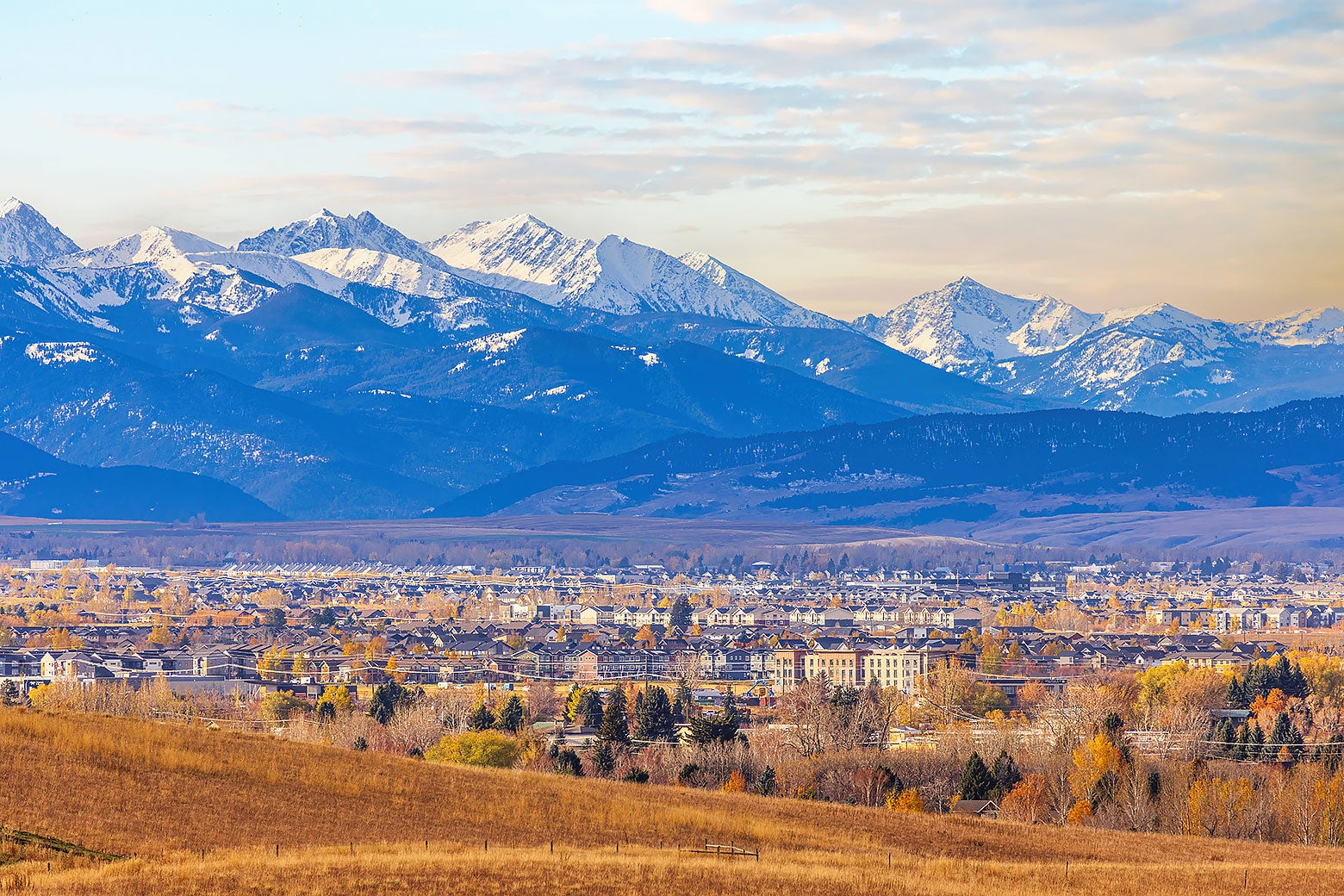Idaho
New climate report warns of increased wildfires, heat and flooding for Idaho and Northwest region – Idaho Capital Sun

A new national climate report warns that increased wildfires, extreme heatwaves and drought will have widespread impacts on the people, industries and ecosystems in Idaho and across the Northwest.
Released last week, the Fifth National Climate Assessment, or NC5, describes itself as “the U.S. government’s preeminent report on climate change impacts, risks and response.”
The assessment includes a national overview as well as regional breakdowns that use data to show the impact and response to climate change in different places across the country.
“Extreme heat, flooding, wildfires and other climate hazards threaten human health, sense of place, ecosystems, infrastructure and industries in the Northwest,” the assessment found.
For the purposes of the climate assessment, the report defined the Northwest as the states of Idaho, Oregon and Washington.
GET THE MORNING HEADLINES DELIVERED TO YOUR INBOX
Report shows climate change’s impact on Idaho’s growing seasons
In particular, the assessment warns that climate impacts will have a disproportionate impact on low income communities, rural communities, Native American Tribes and people of color.
Ryan McGoldrick, a program director for Conservation Voters for Idaho, said the new assessment adds to existing science and data to show how much of an impact climate change will have in Idaho. It also demonstrates the interconnected relationships between the environment, people, industries and land.
Need to get in touch?
Have a news tip?
Drought and scarcity of water will change growing seasons, which will change the schedules of harvests, which will affect farms, food production and entire industries, McGoldrick said.
“My biggest takeaway with national and local reports is how comprehensive the changes brought on by climate change are going to be,” McGoldrick said in a telephone interview. “The more you dig into the specific areas, the more you realize the immense challenges created by climate change in every aspect of our lives.”
Although the report is sobering, McGoldrick said it underscores the importance of taking swift and widespread action.
“While a lot of reports found that it is an uphill battle, there is still a path to avoid the worst-case scenario impacts from climate change,” he said.
The National Climate Assessment is a series of climate science reports mandated by Congress through the Global Change Research Act of 1990. The U.S. Global Change Research Program produces each report using peer-reviewed literature, Indigenous knowledge, local experts and climate data produced by the National Oceanic and Atmospheric Administration, according to the assessment’s introduction.
The first National Climate Assessment was released in 2000. The fourth National Climate Assessment, the most recent previous report, was released in 2017.
What are some of the responses to climate change in Idaho?
The city government of Idaho’s capital and most populated city has ramped up its efforts to confront climate change and prepare for a more resilient community to respond to those changes.
The effort intensified after Mayor Lauren McLean was elected to her first term in 2019 and created a climate team that set to work developing a climate action plan for the city, said Steve Hubble, climate action manager for the city of Boise.
In 2021, the city released Boise’s Climate Action Roadmap, which is available to download online. The report references the previous National Climate Assessment and includes several climate goals for the city government and the community itself. Those goals include:
- Carbon neutral city government operations by 2035.
- 100% clean electricity for the community by 2035.
- Carbon neutral community by 2050.
In its climate plan, Boise officials define carbon neutral as “the removal, to the extent possible, of all human-caused greenhouse gas emissions from the atmosphere through reduction and removal measures.”
One of the biggest local concerns is water.
The city of Boise’s climate risk assessment identified eight key areas of impact – six of which were related to water, Hubble said. Now, the city is focused on an advanced water treatment project where the city will collect used water from industries and businesses, purify the water through advanced treatments and then send the water back to be used again.
The city is also upgrading its fleet to electric vehicles and purchasing renewable energy to power its city buildings and facilities – with hopes of expanding that effort to the airport, Hubble said.
The city of Boise isn’t going it alone either. The cities of Nampa, Hailey, Rexburg, Pocatello, Malad, Soda Springs and Boise received funding for tree planting or tree canopy projects that are designed to reduce heat, keep water cleaner and reduce air pollution. The funding comes from the federal Inflation Reduction Act, which Congress passed and President Joe Biden signed in 2022.
Different agencies of Idaho’s state government are also working to implement sustainable, efficient programs powered by federal funding.
Three agencies are working on a long term, $29 million project to create a network of electric vehicle charging stations situated near Idaho highways.
Idaho school districts have applied for and received federal funding to upgrade their fleet of diesel school buses to new zero-emission electric buses.
Hubble says climate change is a big problem that will require a big response and big solutions.
“The city is leading, but ultimately the long-term success of achieving climate goals will really be driven by residents and businesses, and we need their help and participation,” Hubble said in an interview Tuesday.

Idaho
State Highway 21 closed from Idaho City to Lowman due to high avalanche risk

The Idaho Transportation Department closed State Highway 21 from Idaho City to Lowman on Thursday afternoon due to high avalanche risk.
ITD says that the current weather pattern is likely to trigger avalanches in this section of the highway. Motorists needing to use the roadway after Thursday afternoon will have to use an alternate route, such as State Highway 75.
There are nearly 70 avalanche paths in this 11-mile stretch of SH-21, according to ITD, and avalanches are often triggered without warning, so there is no parking or stopping within this section of the road throughout the winter.
Idaho
'You're making history.' Lacrosse club created in Rexburg. – East Idaho News

REXBURG — Madison County is now home to a lacrosse club that’s preparing to start its inaugural season in 2025.
The Rexburg Crusaders Lacrosse Club was founded in November 2024. Head coach and club president Nick Browneller said the club was created after his son, a freshman at Madison High School, wrote a paper for his speech and debate class about why lacrosse should be a sanctioned sport in southeast Idaho schools.
“He presented it before some teachers and I think the athletic department, then came home and asked if he found a bunch of kids who would be willing to play if I would come out of retirement and coach and I said, ‘Sure,’” Browneller recalled.
Browneller said starting this club is something they’ve tried to do in Rexburg before, but there wasn’t enough people interested until now. He said the sport is growing and noted there are already teams across southeast Idaho in places such as Idaho Falls, Pocatello, Ammon, the Teton Valley and Twin Falls.
“(My son) wound up finding a bunch of kids and within a couple weeks, we had 23 kids sign-up and register to play,” Browneller said.
The team is a junior varsity team made up of students from seventh to 10 grade. Only four kids on Browneller’s team have ever played lacrosse before.
He recognizes there’s a learning curve for his team, especially as they get ready for a season where they’ll face teams that have been around for a while.
“I tell the kids whether you know the sport or not, you’re making history by putting a team in Rexburg, so all I ever ask of them is they show up ready to have fun, work hard and know we’re not judging against what other teams have done,” Browneller stated. “We’re judging on where Rexburg wants to go with this team, and make a mark on the map for this part of southeast Idaho when it comes to lacrosse.”
Browneller has more than 30 years of experience playing and coaching lacrosse. He grew up in Baltimore, Maryland, which he said was one of the first states to have lacrosse.
“It’s an indigenous sport,” he said. “I grew up as if it was Texas football — you play it. For us, it was the main sport.”
Browneller played all through school growing up and when he was a student at Brigham Young University-Idaho, he started a lacrosse club and travel team. Browneller went on to coach Idaho Falls Lacrosse (2012-2017) and was a coach at Washington State University (2017-2020).
He then moved back to Idaho and worked with Idaho Falls Lacrosse for about a year before coaching Pocatello Lacrosse, where he helped that team get to the championship game.
“I was going to take some time off until my son put all this together, so here I am back in the fray with a community that’s really been nothing but supportive (and) parents who have been looking for years to have a lacrosse club and someone to spearhead it,” he said.
The season runs from March through May. Although it’s a community club, Browneller said the team works with Madison High School. The school has given the team time in the fieldhouse and is going to give them a field to use for their home games.
The Rexburg Crusaders will play against Pocatello, Ammon, Teton Valley, Idaho Falls and Jackson during its upcoming season.
Browneller said they are wanting to roll out youth programs in the summer. For more information on the club and what it has to offer, visit its Facebook page.
=htmlentities(get_the_title())?>%0D%0A%0D%0A=get_permalink()?>%0D%0A%0D%0A=htmlentities(‘For more stories like this one, be sure to visit https://www.eastidahonews.com/ for all of the latest news, community events and more.’)?>&subject=Check%20out%20this%20story%20from%20EastIdahoNews” class=”fa-stack jDialog”>
Idaho
Ex-Husky Cort Dennison Reportedly Joins Idaho Coaching Staff

Cort Dennison, one of the University of Washington’s more decorated linebackers over the past decade and a half, has joined Thomas Ford’s new Idaho coaching staff as its defensive coordinator, according to ESPN’s Pete Thamel.
Dennison, 35, comes to the Vandals from Missouri State, where he was the defensive coordinator for one seasons for the FCS soon to be FBS program.
Considered one of college football’s rising assistant coaches and a proven recruiter, Dennison has been trying to rebuild his career since getting fired at Louisville in 2021 while serving the second of two stints with the Cardinals.
Sources: Cort Dennison has accepted the job as the defensive coordinator at Idaho. He was last the inside LB coach at Missouri State. He’s worked as an assistant at Louisville for two stints. He’s worked on staffs at Utah in 2023 and coached outside LBs at Oregon in 2018.
— Pete Thamel (@PeteThamel) December 26, 2024
According to reports, he was involved in a domestic dispute with another Louisville athletic department employee in which all allegations against him later were withdrawn.
A Salt Lake City native, Dennison went home and worked at Utah in 2023 as a defensive quality control coach for Kyle Whittingham.
For Louisville, he joined an ACC team headed up by coach Bobby Petrino in 2014-17 and again in 2019-21 for coach Scott Satterfield, holding a variety of assignments that included co-defensive coordinator and outside linebackers coach.
Peter Sirmon, former UW linebackers coach in 2012-13 and now the California defensive coordinator, worked with Dennison as the Louisville DC in 2017.
Dennison spent the 2018 season with Oregon as its linebackers coach.
As a player, Dennison was recruited to the UW in 2007 by Tyrone Willingham’s staff. By 2011, the 6-foot-1, 234-pound linebacker was a team captain for Steve Sarkisian, a 30-game starter and a second-team All-Pac-12 selection who topped the conference in tackles with 128.
Dennison finished with 15 tackles in his final Husky outing, a 67-56 loss in the Alamo Bowl to Baylor and Heisman Trophy-winning quarterback Robert Griffin III.
For the latest UW football and basketball news, go to si.com/college/washington
-
/cdn.vox-cdn.com/uploads/chorus_asset/file/24924653/236780_Google_AntiTrust_Trial_Custom_Art_CVirginia__0003_1.png)
/cdn.vox-cdn.com/uploads/chorus_asset/file/24924653/236780_Google_AntiTrust_Trial_Custom_Art_CVirginia__0003_1.png) Technology6 days ago
Technology6 days agoGoogle’s counteroffer to the government trying to break it up is unbundling Android apps
-

 News7 days ago
News7 days agoNovo Nordisk shares tumble as weight-loss drug trial data disappoints
-

 Politics7 days ago
Politics7 days agoIllegal immigrant sexually abused child in the U.S. after being removed from the country five times
-

 Entertainment1 week ago
Entertainment1 week ago'It's a little holiday gift': Inside the Weeknd's free Santa Monica show for his biggest fans
-

 Lifestyle1 week ago
Lifestyle1 week agoThink you can't dance? Get up and try these tips in our comic. We dare you!
-
/cdn.vox-cdn.com/uploads/chorus_asset/file/25672934/Metaphor_Key_Art_Horizontal.png)
/cdn.vox-cdn.com/uploads/chorus_asset/file/25672934/Metaphor_Key_Art_Horizontal.png) Technology2 days ago
Technology2 days agoThere’s a reason Metaphor: ReFantanzio’s battle music sounds as cool as it does
-

 Technology1 week ago
Technology1 week agoFox News AI Newsletter: OpenAI responds to Elon Musk's lawsuit
-

 News4 days ago
News4 days agoFrance’s new premier selects Eric Lombard as finance minister




















